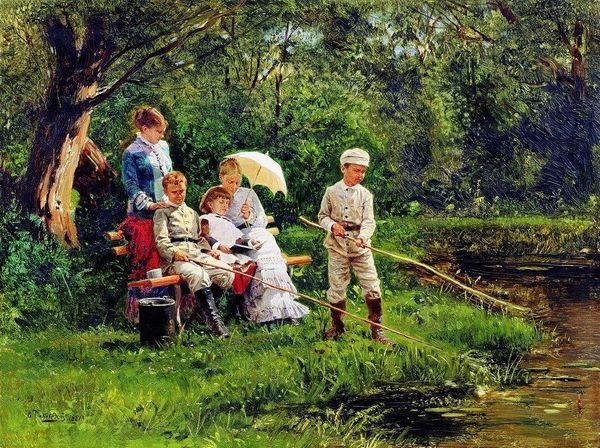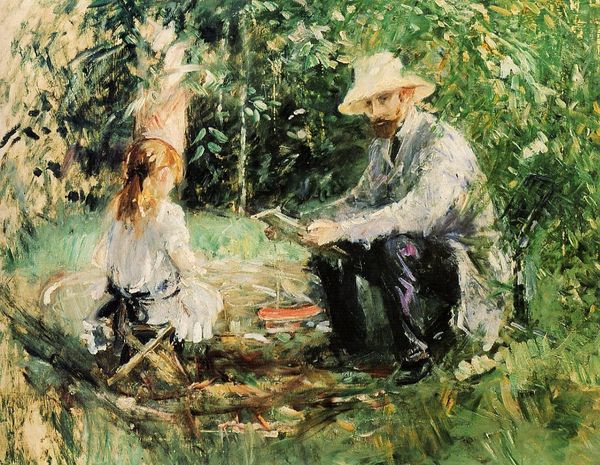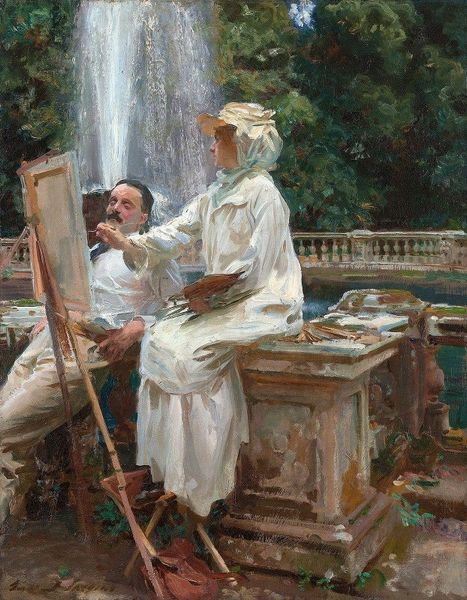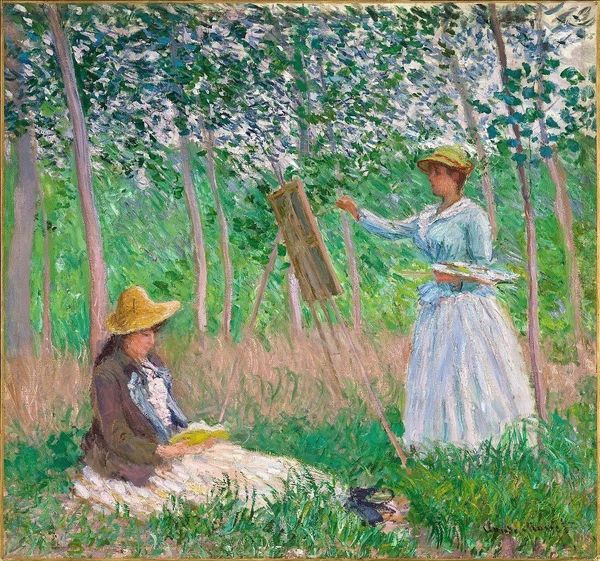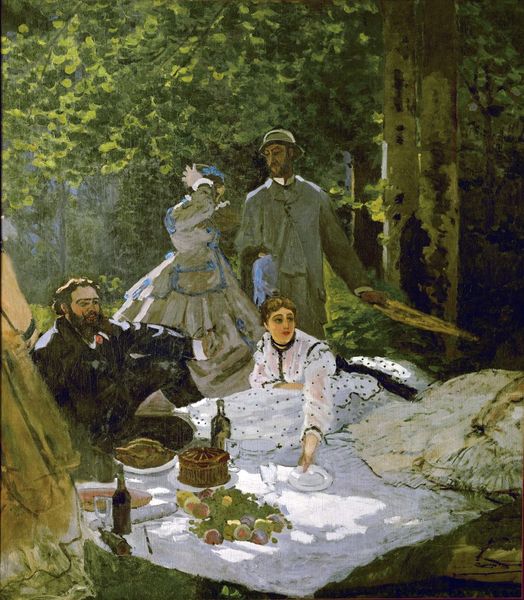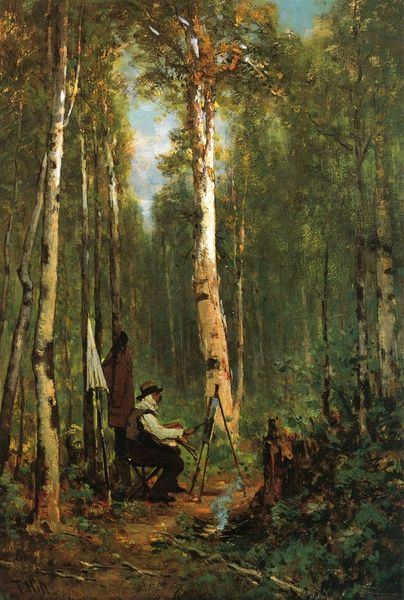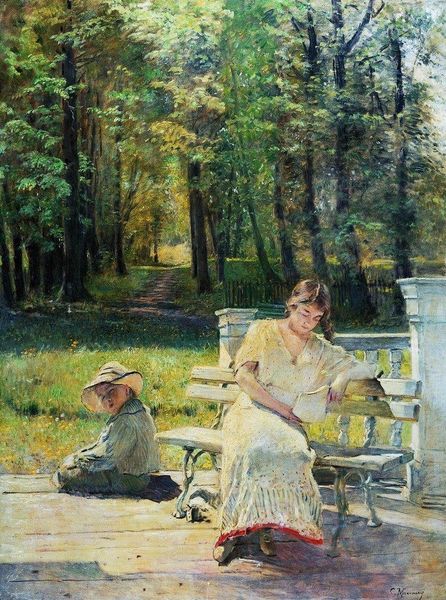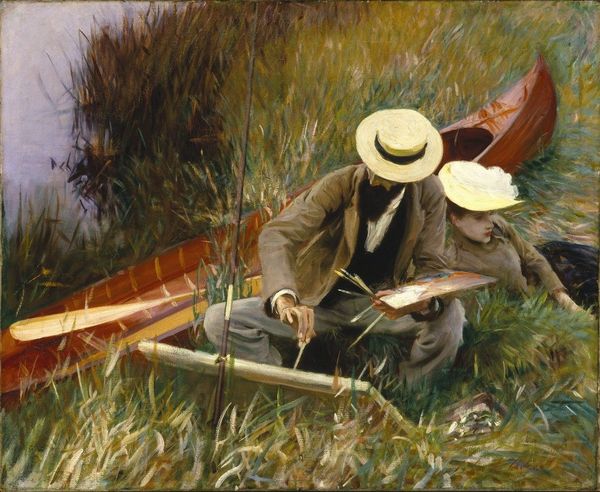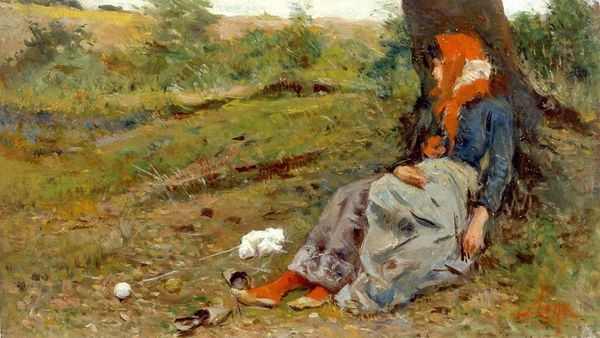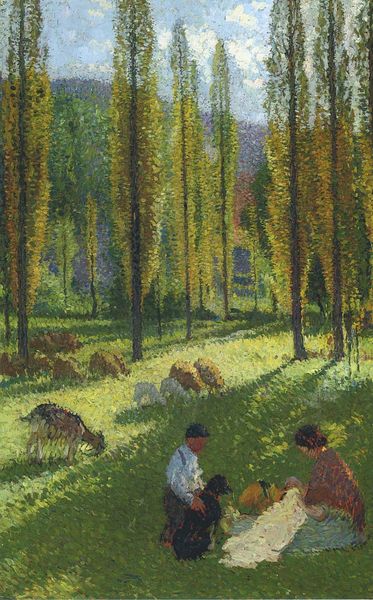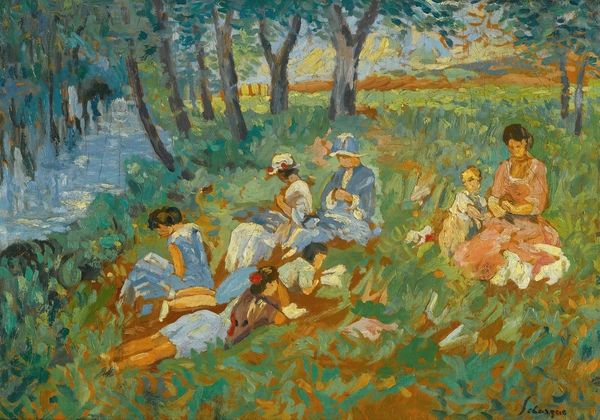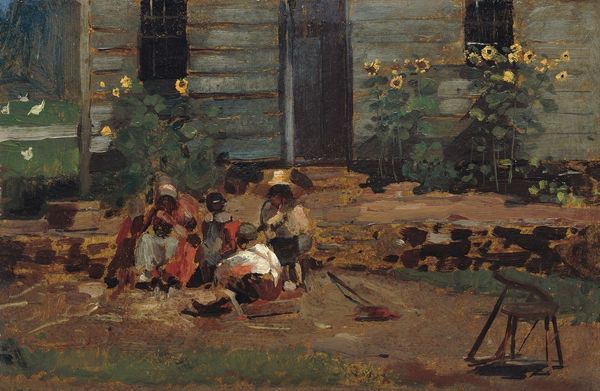
painting, plein-air, oil-paint
#
portrait
#
tree
#
narrative-art
#
painting
#
impressionism
#
plein-air
#
oil-paint
#
landscape
#
figuration
#
oil painting
#
genre-painting
#
surrealist
Copyright: Public domain
Curator: This is "Artists in the Open Air," an oil painting often attributed to Efim Volkov, showcasing several figures painting en plein air. The piece offers a charming glimpse into the artistic practices of the time. Editor: Immediately, the relaxed postures of the artists catch my eye. There's an ease about the scene, as if painting amidst nature is entirely natural to them. Do we know much about who these individuals might be? Curator: Details remain scarce about the specific identities of the figures, but "Artists in the Open Air" speaks volumes about the growing interest among artists to capture fleeting moments and observe life unfolding right before their eyes. This ties into broader shifts in artistic training and the professionalization of artists in the late 19th century. Editor: I am intrigued by the contrast between the formally dressed artist standing before his easel and the other artists who appear seated or reclining more casually. Could this point to different social classes or perhaps a divergence in artistic approaches? The one leaning against the tree, especially, appears quite relaxed. Curator: Indeed, you raise an interesting point about possible social distinctions. While it's tempting to view the formally dressed artist as indicative of the prevailing academic artistic standards of the time, this could equally underscore a transition away from rigid conventions towards embracing an open-air practice and making art accessible for the rising middle class, both male and female. The painting encapsulates the complexities inherent in art historical scholarship and exhibition practices of such art today. Editor: Right, this depiction invites us to rethink those entrenched historical art narratives. The inclusion of a female artist nestled near the large tree invites conversations about access and space—who gets to create, how, and where. It prompts questions about how societal norms and class impact the art world itself. This pushes us beyond simply analyzing brushstrokes to acknowledging historical power dynamics, even in what appears to be a straightforward genre painting. Curator: Exactly! Understanding these historical layers adds depth. Art isn't produced in a vacuum. It reflects societal nuances. In any case, next time you are in nature with a sketchbook or canvas in hand, perhaps you too, dear visitor, can appreciate how many painters, amateur or not, did before you! Editor: Ultimately, the real art lies not just in what's on the canvas, but also in recognizing the complexities inherent in these painted scenes, challenging the boundaries of what constitutes art history. It is an exciting new vista for us to look to for a more holistic and equitable vision of how artistic genius rises through the dust.
Comments
No comments
Be the first to comment and join the conversation on the ultimate creative platform.
